This story originally appeared on Urbanful on March 24, 2015.
People for Bikes, a national cycling advocacy organization, released the results of the most comprehensive cycling survey in recent memory.
The biggest take home statistics from the survey, based on the online responses of 16,000 adults: 100 million Americans (34 percent of the population) went for a ride at least once in the last year. Forty-five million of those bikers made at least one ride as a means of transportation, rather than recreation, but only 14 percent of bikers take two or more rides each week.
That’s not because they don’t want to: 53 percent said they would like to ride more, but don’t.
Why?
Not surprisingly, provision of better quality bike lanes was identified as the key to increasing how often people hit the road: 54 percent of respondents said fear of getting hit by a car or truck is what holds them back, and 46 percent said they would be more likely to ride if a physical barrier separated bike lanes from car lanes.
While most cities have made a big push for more bike lanes in the shoulder area of the roadway, fully segregated bike lanes are a form of cycling infrastructure that is just starting to take off. Still, 17 percent of Americans say they feel more safe riding a bicycle now than they did five years ago, giving reason to be cautiously optimistic about the direction our cities are headed.
One thing the study made clear is that daily commuting to work and school is still rare in this country. Fifteen percent of Americans rode a bike at least once for transportation purposes in the last year, but only 10 percent of those, or about 4.5 million people, identified as the kind of regular riders who commute by bike at least 100 days per year. On the other hand, almost 10 million Americans made at least 100 bike trips for purely recreational purposes in the same time period.
Beyond traffic safety, there are a host of other reasons conspiring to keep us in our cars, only some of which were addressed by the survey.
Two of the most popular:
- Fear of being attacked: Concerns about getting mugged while biking through deserted roadways at night and other such scenarios keep 35 percent of Americans from riding more.
- Logistical challenges, like going from bike to bus or train. According to the survey, 29 percent of respondents said it was easy to combine bicycling and public transit. Most municipal buses have a rack on the front that fits a total of two bikes. If both spaces happen to be full, the unlucky bikers have to modify their transportation plans for the day on the spot, one of those small inconveniences that weed out many would-be bikers.
Still, the study falls short in teasing out the many other minor factors that keep us in our cars. For instance, it doesn’t look at whether there is a safe place to lock a bike once you arrive at your destination. More and more employers are offering bike lockers and some even provide a bike valet or pay their employees to bike to work, but these are certainly in the minority.
It would be interesting to know how many employers promote a bike-to-work culture with facilities like lockers and showers. Bikers often show up at work hot and sweaty, their hair poofed in some places and matted in others, makeup running down their faces. It’s not conducive to jumping into an early morning business meeting, but there are many notable examples of employers attempting to integrate the realities of biking into the corporate status quo.
Perhaps soon we will see a survey that delves into these detailed and telling aspects of biking culture. But one thing is clear: Americans want to bike more, but our cities aren’t always equipped to support it.
For now, the survey leaves us with a few interesting comparisons: While 34 percent of the population rode a bike at some point last year, 39 percent worked at home after hours, 40 percent went jogging, 41 percent used public transportation, 75 percent visited a social media website and 96 percent watched TV. Despite the serious biking data from the survey, those final points certainly give a relevant context for our cultural priorities.
Get your FREE copy of our guide: Momentum Mag's Cargo Bike Guide
Discover the wonderful world of cargo bikes! Download this comprehensive guide to learn about different cargo bike models, brands, the history of cargo bikes, buying advice, one family's experience with cargo biking, and more.
Thank you for your submission. Please check your inbox to download the guide!

Urbanful is a digital magazine and marketplace celebrating city living. From hacking your commute to bringing you the latest city trends, we’re all about those things that make city living great. Read more at Urbanful.org.

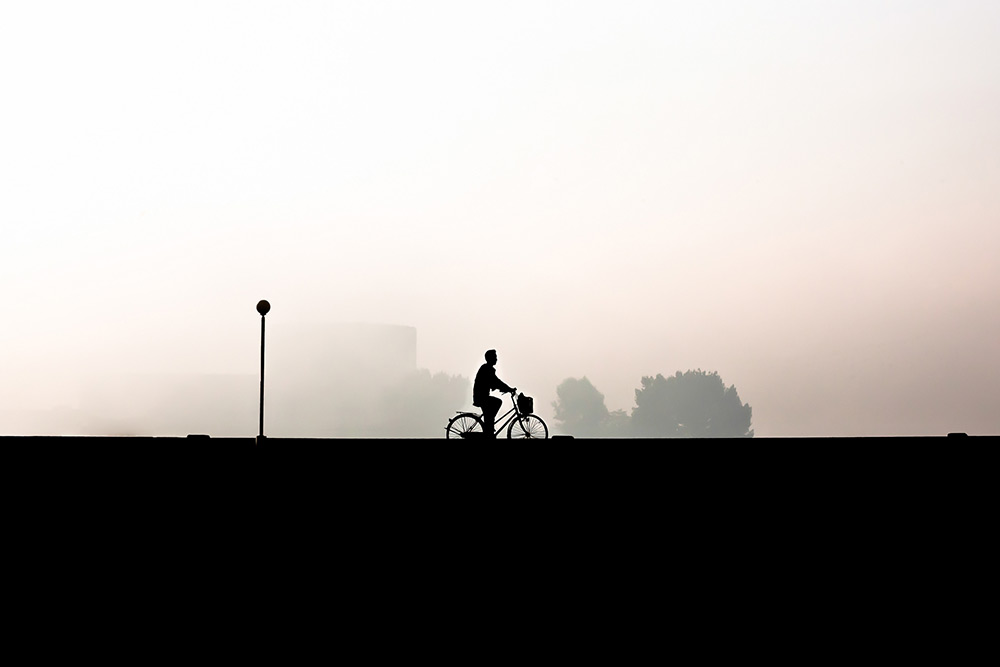
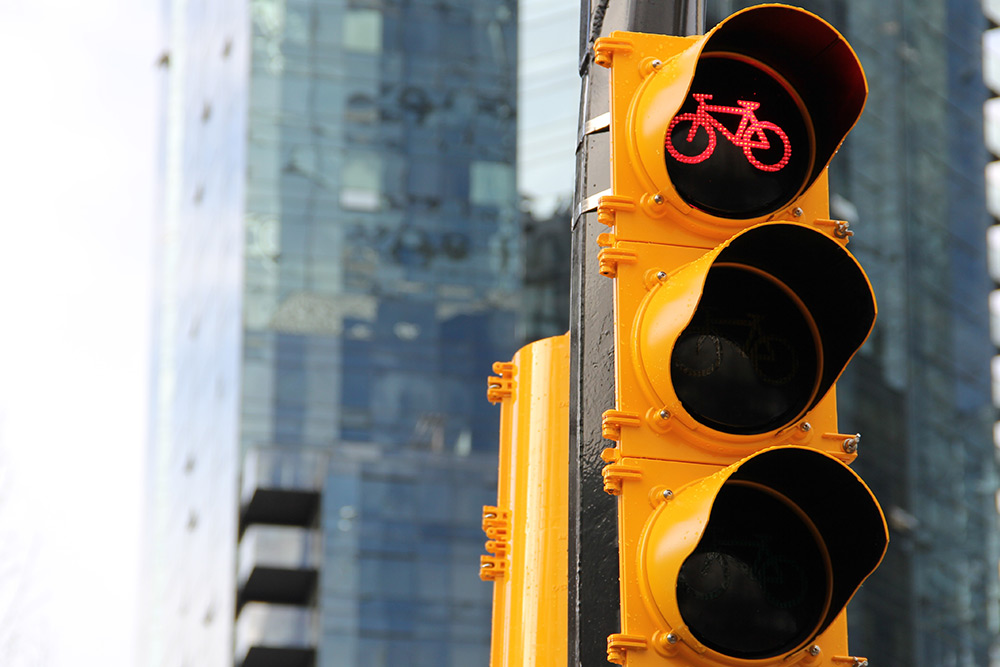
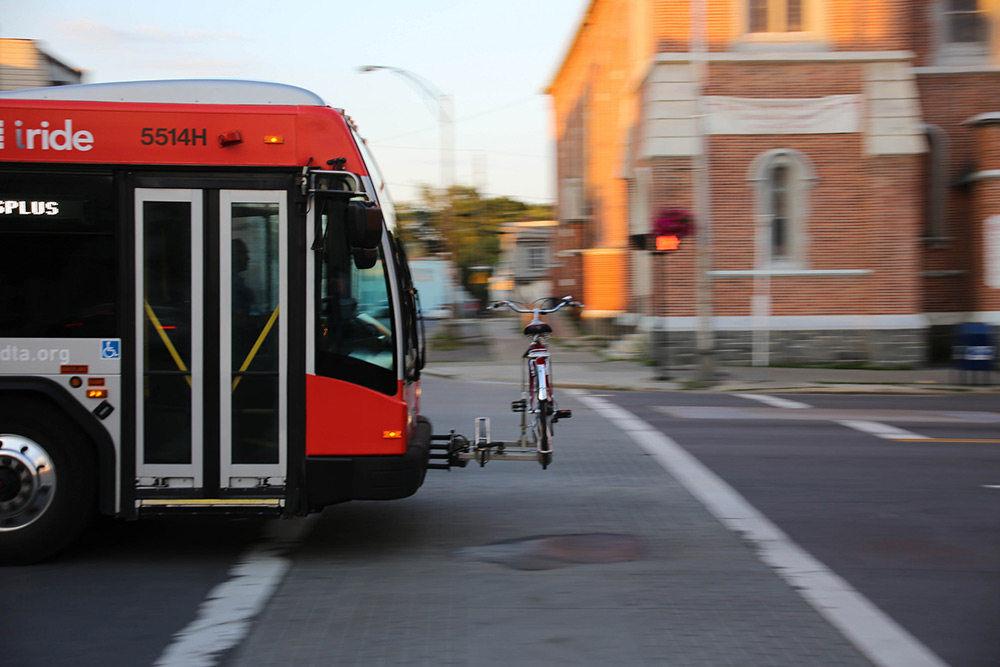
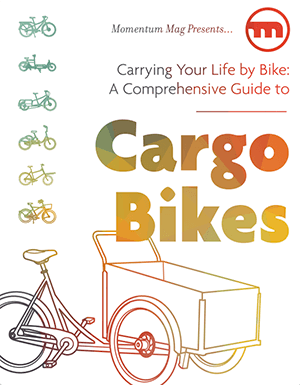

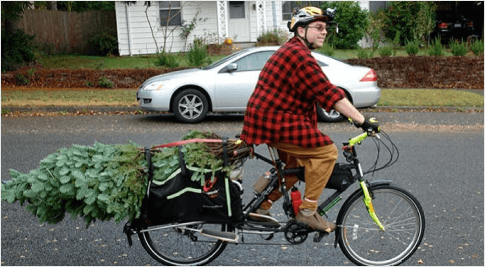

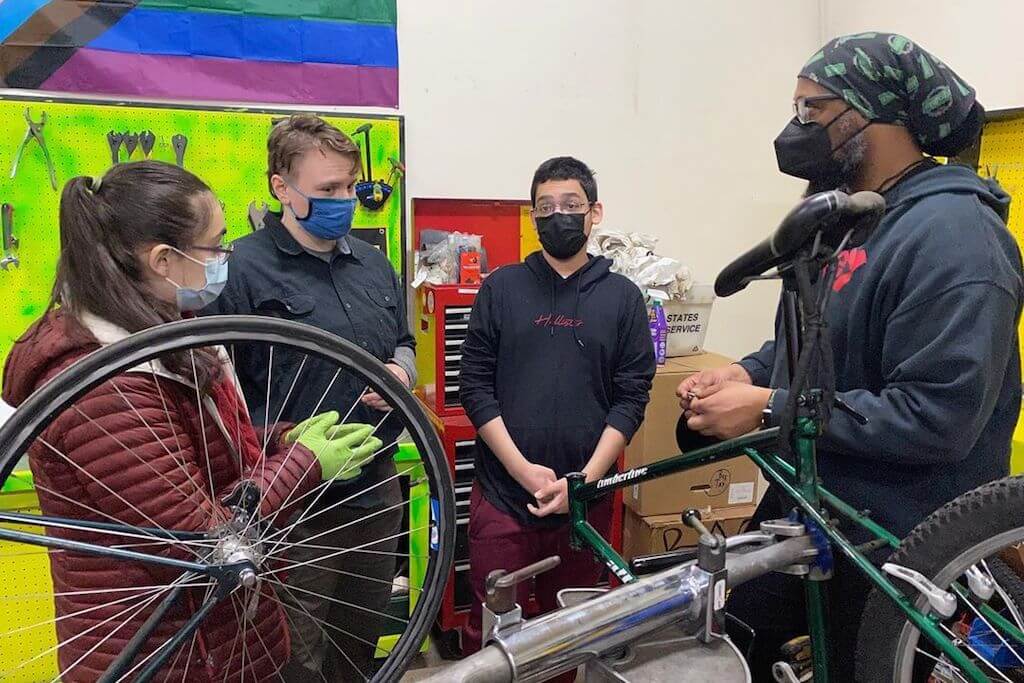
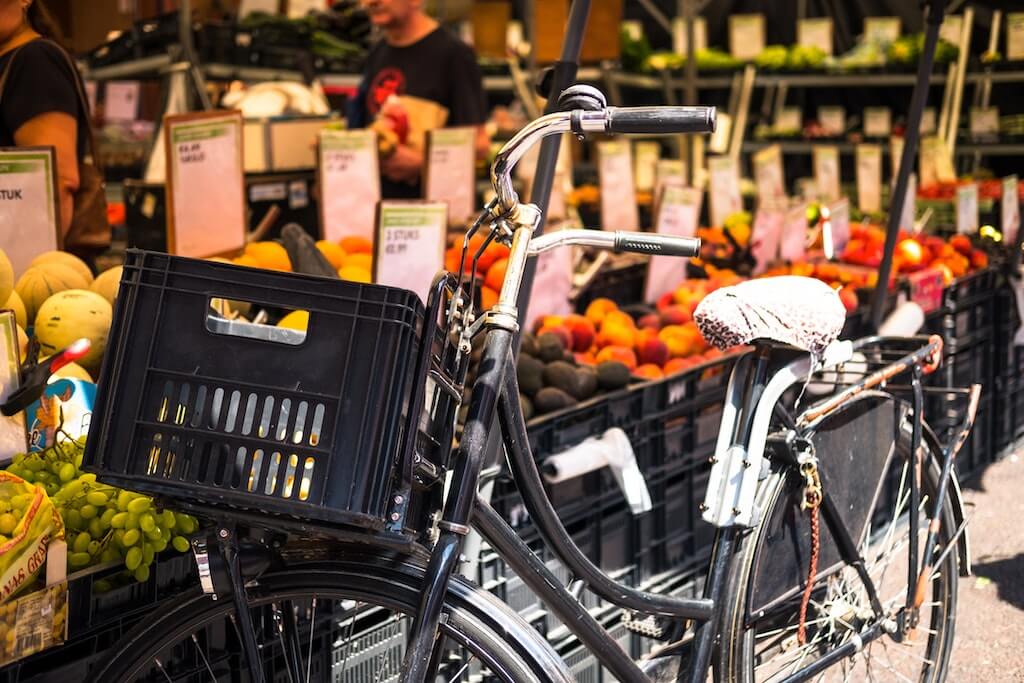

A big reason that more people don’t bike to work is that the true costs of automobile use, and the infrastructure for them, is not where it should be. It should be much, much higher.
“Drivers don’t come close to paying for the costs of the roads they use.” or the fuel they use. Huge tax breaks to the O & G industries keep gasoline prices down to where people will drive more and not seek alternative methods of commuting. So in essence, even if you only bike, but pay income taxes, you are still promoting the use of the car.
Source: http://insideenergy.org/2016/11/04/ie-questions-how-does-the-government-subsidize-oil-and-gas/
“But the huge subsidy to car use has another equally important implication: because user fees are set too low, and because, in essence, people are being paid to drive more, there is excess demand for the road system. If roads were priced to recover even the cost of maintenance, driving would be noticeably more expensive, and people would have much stronger incentives to drive less, and to use other forms of transportation, such as transit and cycling. The fact that user fees are too low not only means that there isn’t enough revenue, but that demand is too high. One value of higher user fees would be that they would discourage excessive use of the roads, lessen wear and tear, and in many cases obviate the need for costly construction projects…part of the reason that subsidies to transit are as large as they are is that motorists are being paid to not use the transit system, in the form of artificially low prices for road use and parking.”
Source: https://www.theatlantic.com/business/archive/2015/10/driving-true-costs/412237/
The folding bicycle solves a number of these issues and they’ve come a long way style- and performance-wise. http://www.planbike.com/2015/07/folding-bikes-part-i-social-bicycle.html
My commute, most days, is 2.5 mi, uphill, on the Eastside of Los Angeles (with a small laptop and my lunch in tow) and I don’t get sweaty. Probably because I ride to work in the morning and home late in the afternoon, when the southern California sun is not at it’s harshest. Actually, I get hotter walking to work without my bike breeze.
Some days I work in Venice Beach, 14 miles from where I live in the Silverlake neighborhood. That commute is much more fun. I take my bike on the subway to a bike path. 2 hours door to door, but that’s just time I don’t have to do in the gym.
As for dressing to ride to work, skirts, dresses, and tailored shorts are my go-tos. A light scarf year round is good too. If it’s colder, I add tights, gloves and cover my ears with helmet earflaps or my knit earwarmer.
I have an older 70’s mixte, but I invested $$ in nice accessories for carrying all my stuff, lights and seat. Heck, it’s money I save on gas and still my ride is comfortable and safe.
Mostly I commute without getting gross because I ride slow, so I rarely think about arriving disheveled.
The reality is, commuting by bike is sometimes faster and more convenient in a city like L.A. with monstrous traffic and not always ample parking.
That’s great if you’re someone who doesn’t sweat much, but for plenty of people that would mean coming into work looking like you just hopped out of the pacific ocean.
I’m really lucky in a lot of ways — my job’s dress code is minimal, I get sweaty on the job ANYWAY, I can bring the bike in the building (and park it 10 feet from my workspace); I’ve been doing it as a ‘majority choice’ since the fall of 2000, and almost TOTALLY since the fall of 2004, when I sold my last car for junk.
The commute right now is 2 miles, and I have multiple routes that could roll that out to 9 if I chose to use them. A couple times, my job location was 9 miles away, still rode to work all but about 10-15 days a year. It’s a WONDERFUL benefit I have, one that I am loathe to give up.
If so many people claim they would ride if there were suitable/safe protected bike lanes or totally separated bicycle infrastructure, why do the HUGE majority scream/holler at the tiny bit of $$ spent on that very “infrastructure” or complain about bike lanes being put on THEIR streets, etc. In Austin, I will never get over the amount of whining about a boardwalk built on the lake recently that allows people on bicycles to ride to downtown and totally avoid a very dangerous street that used to be one of the only routes to take. The boardwalk costs a tiny faction of what ANY highway/road costs to build per mile but OH MY GOD, I CAN’T BELIEVE THE MONEY WASTED ON THIS UNUSED BOARDWALK!! Of course, everyone that complains have NEVER been on it and don’t know HOW MANY bicyclists use it every single day…
My reason is more time constraint. To ride to work at my past of 13 mph is over an hour and a half. That means I would have to get up at 4 am to get to work on time. That time does have a few more concerns but they are manageable.
How I make it work:
-my commute is 12 miles each way, I do it on a single speed (Minneapolis)
-a portion is on a busy road with a bike land, over half is on a dedicated bike path
-as of this season, I’m still too wimpy to brave the winter (need a different bike that can take studded tires), but I plan to in the future when I can save up $!
-I keep bath wipes at my desk
-I store my bike in my cubicle
-I carry a Luxe Camelbak (backpack) with my lunch, flat kit, and a spare shirt in it (I keep a pair of pants at work that I switch out occasionally)
-my commute is only about 20 mins longer on each end as opposed to driving and 100% more enjoyable PLUS no need to go to the gym after!
Ask women in Holland and Denmark if they arrive to work with “makeup running down their faces.” Even in hilly cities, I would call this an exaggeration. It is true that having shower facilities can be the tipping point that gets some people biking, but the sweaty argument is also overblown. Unless it’s hot and humid early in the morning and/or there are grueling uphill stretches, bike commuters don’t show up at work a hot mess. Winter biking is great in that sweating can practically be eliminated. The US is simply too fragile about minuscule self-image issues.
On a less critical note, and hopefully something more helpful, it took me a long time to realize that I was overdressing for temps around 55 degrees. I used to wear a jacket, and, yes, I would arrive at work a bit sweaty. Now I don’t wear a jacket. I feel chilly for the first five minutes of my ride, but I feel great for the rest of the ride. I don’t sweat. My rule of thumb is to look at the weather forecast and add 10 degrees (F) to decide on shirt and jacket. I subtract 10 degrees to decide on gloves and face, as the added wind can be harsh on exposed skin. Hot and humid weather is the most challenging for commuting if you don’t have shower facilities. I’ve been known to have a fresh shirt and deodorant on hand.
Holland and Denmark have relatively mild temperatures due to their geographic locations so sweat is not that big of a problem for most months. Because of how large the United States is and due to its mixed geography, it is easy to be completely trenched in sweat within the first 15 minutes of riding in many cities, especially those in the southern states such as Georgia, North/South Carolina, Louisiana, Florida, and Alabama where it is already 70 degrees in the morning with very high humidity. Even in the western states like California, the heat is unbearable. It is virtually IMPOSSIBLE to ride a bike to a corporate workplace in the spring, summer and even early Fall months without shower facilities there and a change of clothes. The only people that can commute more than 3 miles without completely covered in sweat are probably creatives or low level workers who do not have a dress code and can ride with t-shirts and loose fitting shorts. Please don’t blame that on the US having fragile self image issues. it’s primarily a weather and geography problem.
We may have mild temperatures in the Nlds, but it rains. A. Lot. Heck, it’s the beginning of August and we’ve had 5 days of rain in the past 10 days. It’s pouring now. I commuted by foldup bike for almost 5 years (and I work for an accountants firm, so it’s not like I can show up in sweats and a t-shirt) no matter how hot/cold/wet/humid it got. I got drenched regularly, but it didn’t stop me. What you do is, you prepare. Have a change of clothes with you, have a blowdryer/hairspray handy at work, wear a cap or a coat with a hood. Your makeup really isn’t going to suffer that much. Your hair can be tidied up in just a few minutes.
The reason I stopped cycling and bought a car was my artritis, but I’d still much rather cycle than drive. It’s healthier, cleaner and cheaper. And I find it odd that whenever someone points out a solution from elsewhere in the world, the reply from Americans is always “That won’t work here, we have XYZ and they don’t have to account for that”. You really aren’t all that special. Hot and humid conditions may not apply much in northern Europe, but they most assuredly do in South Asia, where a great many people use a bike too. Where there is a will, there is a way. Where there isn’t a will, there are excuses.
It depends where you live. Here in South Florida, it is hot and humid most of the year including in the morning. My commute is merely four miles and I arrive to work sweaty mostly in the pits and around the neck and hairline. I am the type to not wear make up and I do keep an extra shirt/deodorant. But I can’t imagine this being feasible if the commute was much longer or if we had a stricter dress code at the office.
there is only one place I worry about getting hit by a car on my two and a half mile bike commute. ironically the entire way is in a bike lane.next to high speed traffic. the route I take to school has no bike lane and I feel considerably safer sharing the lane with slower traffic. From my perspective bike lanes do not improve safety. Managing speed and capacity does.
I have to agree that just putting a stripe down is too often considered the solution, but we really need to consider comprehensive traffic calming if we really want people to use bike lanes, even the protected ones. There’s really no reason to keep speed limits where they are within cities; the difference in travel time will be pretty minimal for the most part, and slower speeds will make our cities more livable and safe for everyone.
Hospital I work at added 27 bike rack. The parking office looks out toward it plus there are security cameras. There are showers in many units but I usually don’t have time. I keep wipes in hand and in locker. Lucky I wear scrubs. When going to clinic I carry a fresh top to change to. I’ve been commuting regularly for 8 years. Way easier than finding parking in Brooklyn, NY. I work the 8 pm to 8:30 am shift in one hospital.
One of my local bike shops has a group that goes on weekly rides- they welcome newcomers and teach them the ways of the road (bike). I think that could be one thing that would help introduce more people to riding regularly and possibly to work and help them become more comfortable.
I always wanted to commute to work by bike. It’s only 4.3 miles each way and I live in SoCal where the weather is almost always cooperative and I’m blessed to have decent roads. Plus public transportation here is horrid. But I only had a skinny-tired road bike and it was such a pain — I had to put together a kit of clothes to change into, makeup to apply (or reapply), etc. And by the time I got to work I was sweaty which doesn’t enamor one to coworkers later in the day. I could not stop anywhere to pick up groceries, because … road bike. Then I got a cruiser, thinking I’d just load it up with a basket and panniers etc. (and it was so cute!) but that sucker was HEAVY. Even the slightest hills were so much work! Then I tried an e-bike. And all of a sudden every objection I had was eliminated. I loved it so much I decided to open my own e-bike shop and now am working to convert others into bike commuters.
Really admire your commitment and persistence. You kept trying options until you got something workable. Also admire that you are actively converting others.
Comments are closed.